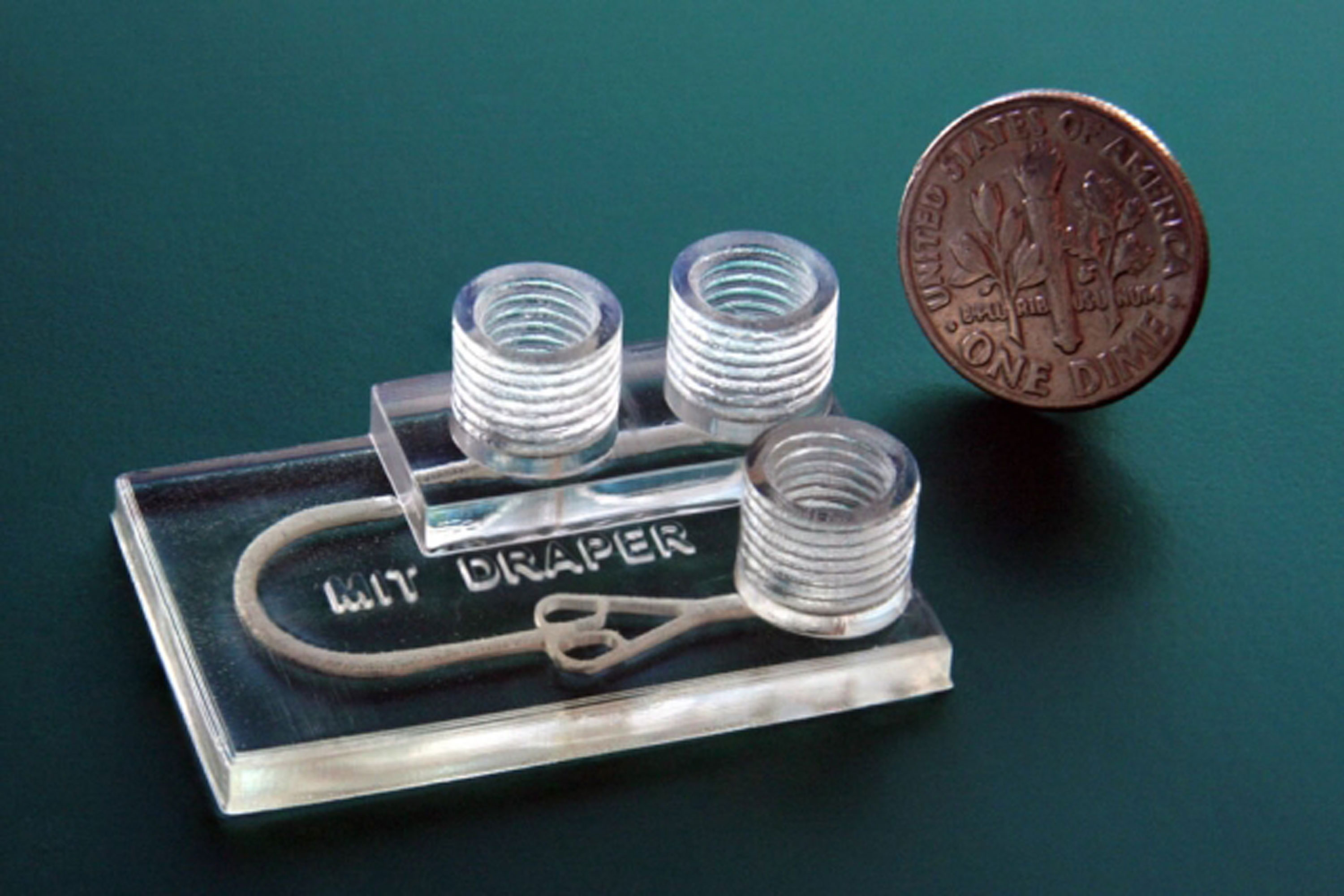
A 3D-printed microfluidic device that simulates cancer treatments on biopsied tumor tissue could help clinicians assess how individual patients will respond to different drugs—before administering a single dose.
Designed by MIT and Draper researchers, the device is the size of a quarter and can be printed at low cost in about an hour. It is made of a biocompatible resin that’s commonly used to make mouth guards. While other printable resins typically kill cells quickly, this near-transparent resin supports long-term survival of biopsied tissue and prints in very high resolution.
Tumor fragments are injected into the device, whose three cylindrical “chimneys” act as ports to introduce and drain fluids, such as cancer-fighting agents and nutrients for the tissue. These chimneys also remove air bubbles that might disrupt the experiment. Clinicians can use imaging techniques to see in real time how the tumor tissue responds to different drugs.
A promising application is immunotherapy, where certain drugs rev up a patient’s immune system to fight cancer. “You can envision a future where your doctor will have a 3D printer and can print out the devices as needed,” says co-inventor Luis Fernando Velásquez-García of the Microsystems Technology Laboratories. “You can run multiple tests in parallel and figure out what would work best with the patient’s biological makeup.”
Keep Reading
Most Popular
How scientists traced a mysterious covid case back to six toilets
When wastewater surveillance turns into a hunt for a single infected individual, the ethics get tricky.
The problem with plug-in hybrids? Their drivers.
Plug-in hybrids are often sold as a transition to EVs, but new data from Europe shows we’re still underestimating the emissions they produce.
What’s next for generative video
OpenAI's Sora has raised the bar for AI moviemaking. Here are four things to bear in mind as we wrap our heads around what's coming.
Stay connected
Get the latest updates from
MIT Technology Review
Discover special offers, top stories, upcoming events, and more.